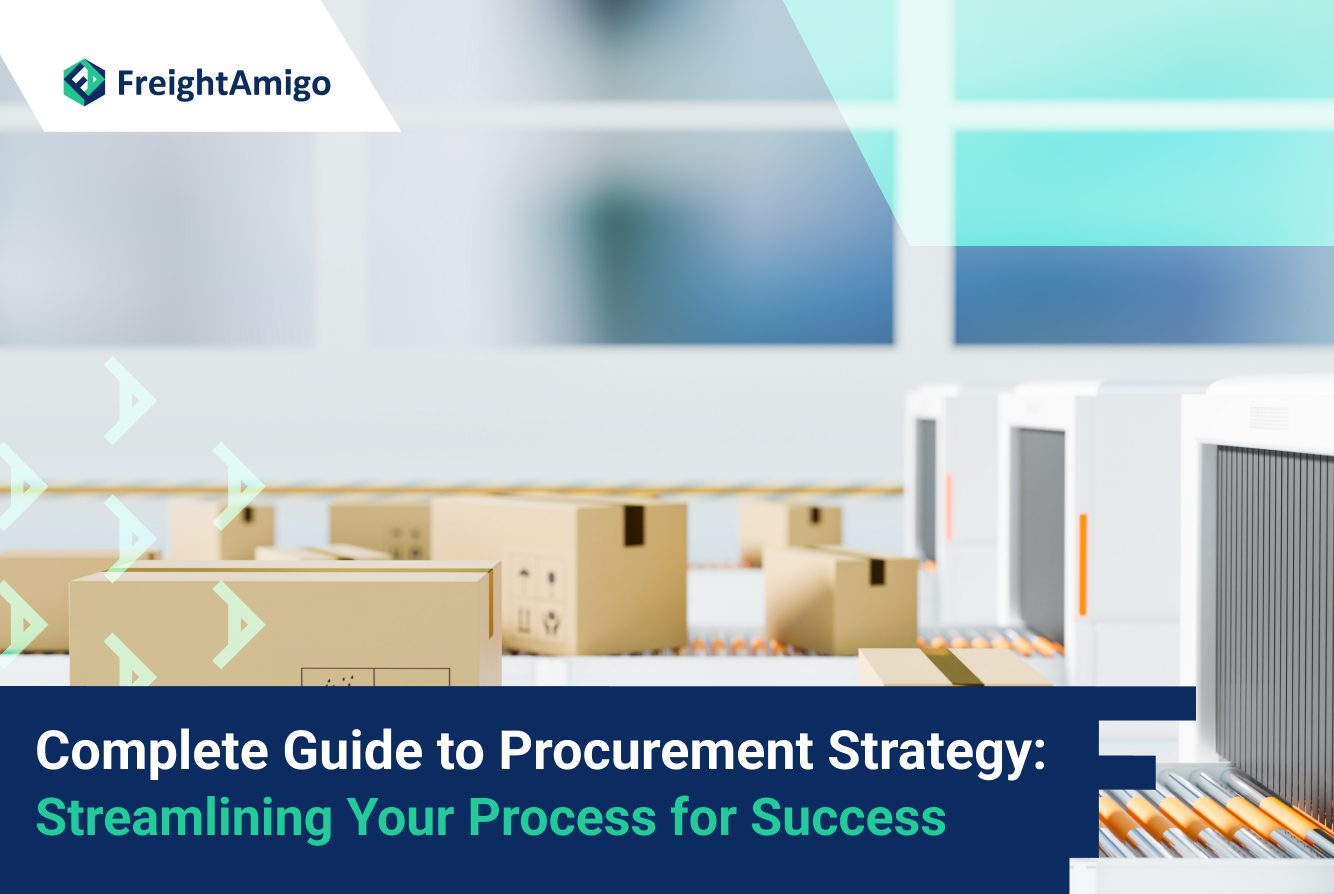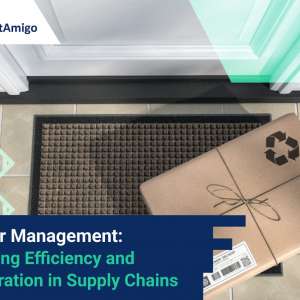In today’s competitive business landscape, organizations must have efficient procurement strategies in place to optimize their spending, minimize wasteful expenses, and drive growth. Whether it is acquiring raw materials for production or obtaining services to support daily operations, the procurement process plays a crucial role in a company’s success. In this comprehensive guide, we will explore the definition and importance of procurement, the steps involved in a successful procurement strategy, and how leveraging procurement technology can streamline your organization’s procurement cycle.
Author Name:Tiffany Lee – Marketing Analyst at FreightAmigo
Want To Compare The Best Express, Air Freight, Sea Freight, Rail Freight & Trucking Rates So As To Have Better Control On Cost?
What is Procurement?
Procurement is the end-to-end process of sourcing, acquiring, and paying for goods and services needed by an organization. While terms like “procurement,” “purchasing,” and “sourcing” are often used interchangeably, it is important to understand that they represent different components of the overall procurement function. Purchasing focuses on the ordering and delivery aspect, while sourcing pertains to selecting the right suppliers. Procurement encompasses the entire process, including sourcing, acquisition, settlement, analysis of procurement data, and future-spend planning.
The Importance of Procurement in Business
Every business relies on materials, goods, and services to achieve its goals. Managing these acquisitions efficiently is crucial for controlling costs, optimizing budgets, and ensuring smooth operations. A well-defined procurement strategy allows organizations to acquire goods and services at the best price and terms, while also fostering strong supplier relationships. By negotiating advantageous terms and streamlining the procurement process, organizations can achieve cost savings, minimize wasteful spending, and gain insights into how budgets are deployed. These savings can then be reinvested to drive growth and provide a competitive edge in the market.
Types of Procurement
Companies engage in different types of procurement based on their specific needs and goals. Understanding these types of procurement can help organizations tailor their strategies accordingly.
Direct Procurement
Direct procurement involves acquiring goods and services that are directly related to the production process within an organization. This includes raw materials, components, software, or any other items that directly support the production of the company’s offerings.
Indirect Procurement
Indirect procurement refers to the acquisition of goods and services that are not directly tied to the production process. This category includes office supplies, software for internal communication, facilities services, and other items that support the organization’s daily operations but are not part of the core production process.
Both direct and indirect procurement involve the acquisition of goods (tangible objects) and services (non-tangible purchases). Goods procurement includes raw materials, office supplies, furniture, and other physical items, while services procurement encompasses professional services such as consulting, software-as-a-service (SaaS), and facilities maintenance.
The Procurement Process: A Step-by-Step Guide
A well-defined procurement process is essential for effective procurement management. While each organization may have its own unique process, the core steps of the procurement cycle generally remain the same. Let’s explore these steps in detail:
-
Identifying a Need
The procurement process begins when a stakeholder within the organization identifies a need for a product, materials, software, or services. This need is typically outlined in an intake form or requisition form, which includes all the relevant information needed to approve and process the purchase.
-
Submitting a Purchase Requisition
Once the need is identified, the stakeholder completes a purchase requisition form. This form provides details about the requested purchase, including specifications, quantity, delivery requirements, and any recommendations for specific solutions or service providers.
-
Evaluating Potential Suppliers
Procurement evaluates potential suppliers based on competitive analysis and existing strategic sourcing partnerships. This evaluation process may involve a competitive bidding process, such as a Request for Proposal (RFP) or Request for Quote (RFQ), to determine the best supplier that can fulfill the organization’s requirements.
-
Negotiating Terms and Conditions
Once the best supplier is selected, the procurement team initiates the negotiation process. This involves working with the supplier’s sales representative to establish pricing, terms, and conditions for the purchase. Negotiations should only proceed after all departmental prerequisites are met and any necessary approvals are obtained.
-
Creating a Purchase Order
After the negotiation process is complete, procurement creates a purchase order (PO) to officially acquire the goods or services from the selected supplier. The PO typically goes through an approval process to ensure that all transactions meet the organization’s expectations and comply with relevant policies and regulations. Once approved, the PO is transmitted to the supplier for fulfillment.
-
Receiving and Reviewing Goods
Once the supplier fulfills the order, the procurement team receives the goods or services and conducts an inspection to ensure the quality and accuracy of the shipment. If the received items do not meet expectations, the receiver may seek adjustments from the supplier or initiate a return process.
-
Reconciling and Matching
After the receipt of goods is complete, a three-way match is conducted to ensure that the shipment, invoice, and purchase order all match. This matching process helps validate the accuracy of the transaction and ensures that the organization pays for the goods or services it received. Additionally, supplier evaluations are conducted to assess their performance and adherence to contract conditions during the delivery process.
-
Invoice Approval and Settlement
Once the three-way match is complete, the supplier’s invoice is submitted for processing. The invoice goes through the necessary batching, coding, and scheduling for payment. This step ensures accurate and timely payment to the supplier.
-
Post-Close Activities
After the procurement cycle is complete, various post-close activities take place. These include record-keeping, reporting, spend analysis, supplier evaluation, contract management, and supplier onboarding or termination. These activities are crucial for maintaining accurate procurement records, identifying opportunities for cost savings, and continuously improving the procurement process.
The Role of Procurement Technology in Streamlining the Process
Managing the procurement process and analyzing procurement data can be a complex and time-consuming task, especially for organizations dealing with numerous vendors and invoices. This is where procurement technology comes into play. By leveraging procurement software, organizations can automate various aspects of the procurement cycle and centralize procurement data, thereby reducing manual efforts and enabling better decision-making. Let us explore how procurement technology can optimize your procurement process:
Analyzing and Contextualizing Purchasing Data
Procurement software allows businesses to analyze and contextualize purchasing data, enabling them to set more accurate budgets and effectively plan capacity. By gaining insights into spending patterns, organizations can identify areas of cost-saving and make strategic decisions that align with their financial goals.
Streamlining Vendor Selection
Procurement software facilitates the vendor selection process by providing tools for competitive analysis and strategic sourcing. It enables buyers to evaluate potential suppliers based on various criteria, such as pricing, quality, reliability, and past performance. This streamlines the vendor selection process and empowers organizations to make informed decisions when acquiring goods and services.
Centralizing Contract and Supplier Data
Procurement technology centralizes contract, benchmarking, and supplier data, making it easily accessible for stakeholders involved in the procurement process. This centralized repository of information helps organizations negotiate better terms with suppliers, track performance against contract obligations, and identify opportunities for improvement.
Automating Three-Way Matching and Reconciliation
One of the most time-consuming aspects of the procurement process is the three-way matching and reconciliation of invoices, purchase orders, and receipts. Procurement software automates this process, eliminating manual efforts and reducing the chances of errors or discrepancies. This automation ensures accurate payment processing and improves overall financial control.
Streamlining Invoicing and Vendor Payments
Procurement software streamlines the invoicing and vendor payment process by automating data entry, eliminating invoice exceptions, and integrating and consolidating vendor payments. This not only saves time but also improves cash flow management and strengthens supplier relationships.
Integrating Procurement with FreightAmigo
To further enhance the effectiveness of your procurement process, consider integrating it with FreightAmigo—a leading supply chain logistics and freight management platform. By seamlessly connecting procurement with transportation requirements assessment, cost estimation, logistics evaluation, and real-time visibility and tracking, FreightAmigo optimizes transportation planning, cost control, supplier evaluation, and efficient shipment arrangements.
With FreightAmigo, you can:
- Assess transportation requirements and estimate transportation costs during the procurement process.
- Evaluate supplier logistics capabilities to ensure efficient and reliable transportation arrangements.
- Coordinate transportation arrangements seamlessly with suppliers and track shipments in real-time.
- Integrate procurement data with FreightAmigo’s comprehensive platform for a holistic view of your supply chain logistics.
By integrating FreightAmigo with your procurement process, you can achieve end-to-end visibility and control over your supply chain, enhance operational efficiency, and drive cost savings.
Conclusion
In conclusion, a well-defined procurement strategy is vital for any organization’s success. It enables efficient acquisition of goods and services, drives cost savings, and fosters strong supplier relationships. By following a structured procurement process and leveraging procurement technology, organizations can streamline their procurement cycles and gain valuable insights for continuous improvement. Integrating procurement with FreightAmigo further enhances the effectiveness of the procurement process by optimizing transportation planning and logistics management. Embrace the power of procurement and unlock the potential for growth and success in your organization.
There Are Different Options For Cargo Transportation. If You Want To Choose The Most Convenient And Suitable Solution, It Is Best To Have The Full Support Of Logistics Experts! If You Are Planning To Ship Goods Overseas, Please Go To The FreightAmigo Page For Inquiries.
===
Read More:
【Robotic Sortation Systems】Revolutionizing Warehouse Operations
【Electric Trucks】Revolutionizing Sustainable Logistics
【Route Optimization in Logistics】Enhancing Efficiency and Cost Savings
===
If you have any inquiries on logistics/supply chain, feel free to contact FreightAmigo now:
Chat with us online OR
Phone : +852 28121686
WhatsApp: +852 27467829









































